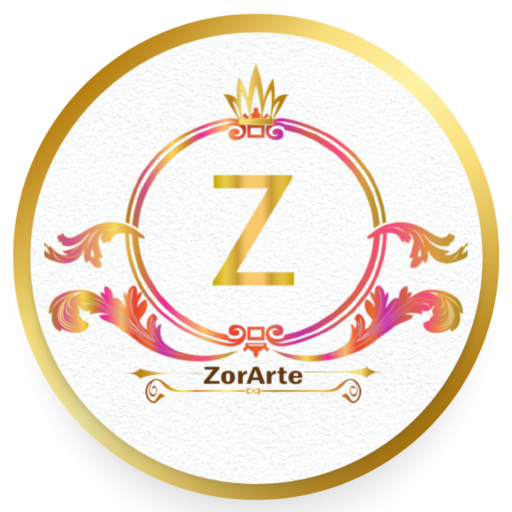How to Make an Effective Fundraising Plan
- Description
- Curriculum
- FAQ
- Reviews
- Grade

Welcome!
Many organizations are urgently seeking to raise funds to continue operations. Professionals in the nonprofit industry focus on going directly to request donations. However, to achieve effective fundraising strategies and a sustainable nonprofit organization/charity, planning and evaluating your fundraising strategies is critical.
I designed this course for nonprofit organizations that want to excel in their fundraising strategies and are willing to invest time planning their fundraising initiatives based on the analysis and understanding of their needs.
That is why, in this course, I focus on planning and evaluation. In this course, I explain the planning components so that you can effectively develop your organization’s fundraising plan when you finish.
The course is divided into three (3) sections:
Section 1: The Needs Assessment. It is focused on providing you with tools to identify your fundraising needs. It includes:
-
Three (3) exercises.
-
PDF with PowerPoint slides used in the video.
-
Assessment template.
-
Document in Microsoft Excel with illustrative examples.
-
Document in Microsoft Excel integrating everything taught in this section.
Section 2: The Plan Components. It is focused on the components necessary to develop the fundraising plan. It includes:
-
Five (5) exercises.
-
PDF with “slides” used in the video.
-
Plan template.
-
Document in Microsoft Excel integrating everything taught in this section and the previous one.
Section 3: Evaluating the Plan with the “Discrepancy Evaluation Model.” It is focused on “how to evaluate your fundraising plan” to determine if you effectively addressed the needs you identified and planned for.
-
One (1) exercise.
-
PDF with “slides” used in the video.
-
Evaluation Template.
-
Document in Microsoft Excel integrating everything taught in this section.
References and suggested books:
-
Rosa, R. (2006) Planificación y Evaluación de Programas
-
Burke, N. Works, E. (2012) The Complete Book of Grant Writing
-
1What is the focus of the course? Clear expectations
In this short video, I share a story that explains the focus of the course to provide clear expectations to students about what they will found in the course. See a short case study link at the resources section and a .pdf with the presentation.
-
2Welcome and Course Overview
Welcome and course overview-description.
-
3Introduction
A short introduction to what is a plan and its components.
-
4The 5 Why
The success of any fundraising department consists of a team that excels in its fundraising efforts and is not lost or confused among other organizations’ fundraising initiatives.
This lesson introduces the tool of “The five Whys?” With this analysis tool, you will be able to define in your own words the unique characteristics and needs of your organization. You will need this to distinguish between needs that are symptoms from needs that are the causes. With this tool, you will be able to focus your plan on addressing those causes to achieve results that address the root of your organization's fundraising problem/s.
-
5What is Assessment?
To create a quality plan effectively you need to have a structure. The first step in this structure consists of learning to create an assessment framed by the data collection of your organization’s needs. This includes: identifying your motivations, reviewing the sources of income, measuring the success and effectiveness of your fundraising initiatives, among other things.
-
6Develop your Assessment
The assessment identifies and organizes actions to have a clear perspective of your organization’s needs. In this lesson, you will learn how to develop an “audit”. The assessment will help you identify the fundraising relevant areas you will later use on your plan.
LEARNING ASSETS:
• Define the steps to carry out your assessment.
• What types of fundraising questions should you include in your assessment template?
• Examples of assessment fundraising questions.
-
7Data Collection and Order
In this lesson, we delve into the process of gathering information and ordering it. With an example using Microsoft Excel, you will see how you can collect the necessary information and how to organize it for future interpretation and use.
LEARNING ASSETS:
• How and where to collect the information?
• How and where to order the collected information?
-
8Interpretation and Use
In this lesson, we delve into the process of interpreting and using the information. With an example using Microsoft Excel, you will see how you can reach conclusions through the interpretation of the information you collect and how to use it in building the goals and objectives for your fundraising plan.
LEARNING ASSETS:
• How to interpret the information?
• How can you use the interpretations in your fundraising plan?
-
9The Strengths Perspective
In this lesson, you will learn about the strengths perspective and tools to explore your organization’s fundraising strengths. The purpose is for you to use those strengths to empower your fundraising team and boost your funding strategies. Your strengths will help you to face your fundraising challenges.
LEARNING ASSETS:
• What is the Strengths perspective?
• How to identify and use your strengths to face your fundraising challenges?
-
10Assessment Summary
In this lesson, you will review everything learned in the assessment section, and you will be exposed to a document in Microsoft Excel that groups together in a practical way what you have learned in this section.
LEARNING ASSETS:
• How to integrate and harmonize “the 5 Whys” tool and the assessment components to develop your fundraising plan?
-
11Assessment Quiz
Review your knowledge.
-
12Goals
In this lesson, you will learn what a goal is and how to write it based on the needs you have identified during the assessment process.
LEARNING ASSETS:
• What is a goal?
• How to build a goal?
-
13SMART Objectives
A wise fundraising team takes action based on efficiency. To do this, define specific objectives based on what are your organization’s needs and the resources it has will lead you to have a practical fundraising plan that uses human, economic, and technological resources intelligently. In this lesson, you will learn to write specific objectives using the SMART technique.
LEARNING ASSETS:
• How do goals and objectives harmonize?
• What questions should answer your objective?
• What is a SMART objective?
• How to write SMART objectives?
-
14Courses of Action
In this lesson, you will learn to develop your courses of action by answering the questions: How do I achieve this goal? Where will I put my human, economic, and technological resources? How will I manage my time? And what should I do first to achieve this?
LEARNING ASSETS:
• What actions will you take to achieve your goals and objectives?
• How to design the courses of action?
-
15Implementation Strategies
In this lesson, you will learn some strategies to get your fundraising plan executed.
LEARNING ASSETS:
• What can you do to facilitate that you and your team put the plan in motion
-
16Fundraising Plan Summary
In this lesson, you will review everything learned in this section, and you will be exposed to a document in Microsoft Excel that groups together in a practical way what you have learned in this section.
-
17Planning Quiz
Review your knowledge.
-
18Fundraising Process "Competencies"
In this lesson, you will learn the professional fundraising competencies and the framework within which you will apply those competencies. For this, I present you the guidebook with the competencies developed by "The Network for Social Work Management."
-
19Competencies Assessment
-
20Fundraising Process "Research"
In this lesson, you will learn about the research component and how to target your fundraising efforts to those potential donors that align with your organization's Mission and Vision.
-
21Fundraising Process "Identification and Relationships Development"
In this lesson, you will learn about the identification and relationship development fundraising component and ideas about how to include them on your fundraising plan.
-
22Fundraising Process "Request, Receive, and Manage"
In this lesson, you will learn about the request, receive, and manage fundraising components. Also, you will learn how to include then in your fundraising plan.
-
23Fundraising Process
Review your knowledge












